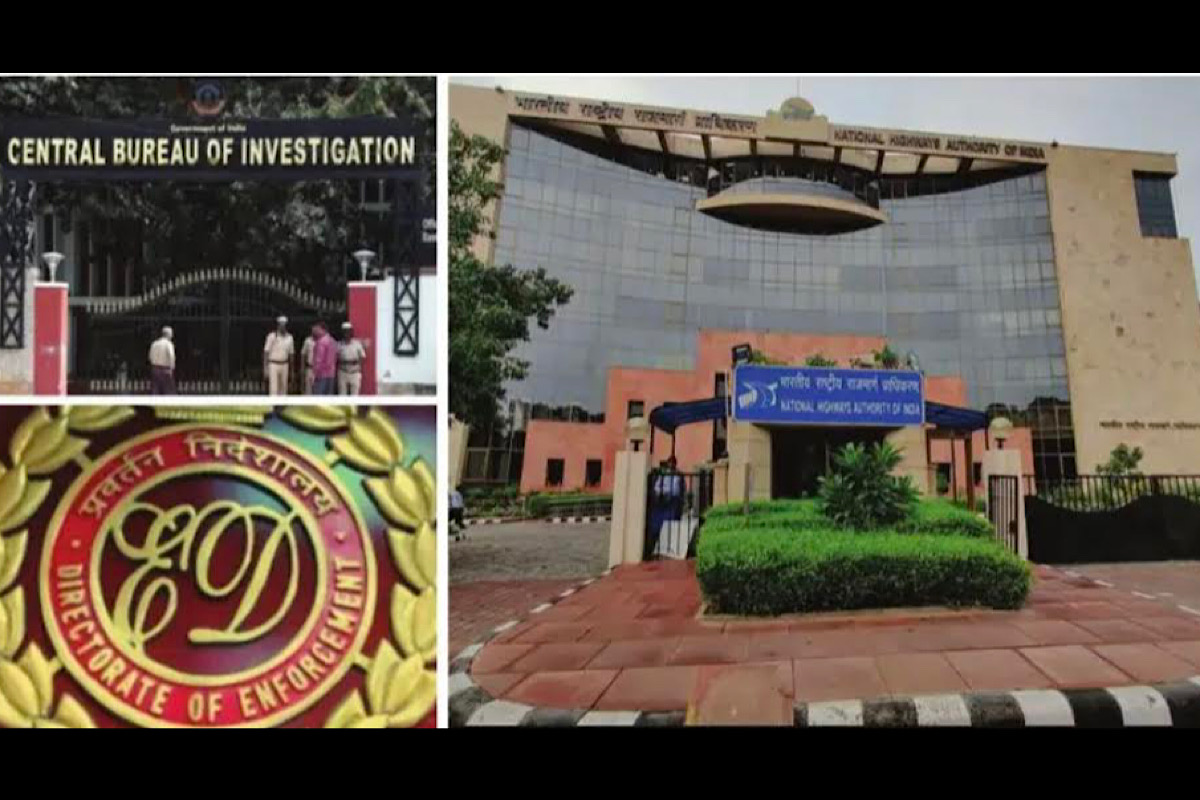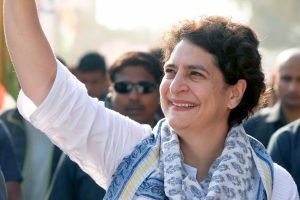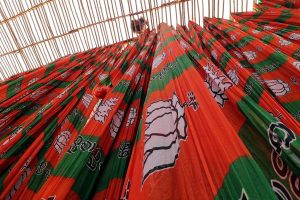The current spate of enforcement actions by Central agencies has clearly unnerved opposition parties, prompting them to level allegations of bias and overzealousness at all available forums. Spokesmen of the ruling party have been equally prompt in denial, going to the extent of labelling the entire opposition as corrupt and immoral.
Details of enforcement action, available in public domain, show massive corruption at the ministerial and top bureaucratic levels. Instances like an erstwhile Maharashtra minister setting a target of bribe collection of Rs.100 crore monthly, shock one’s conscience.
The public, which often sees men of modest means amassing fortunes once they get political or bureaucratic office, is savvy enough to guess that similar results would follow if enforcement agencies turn their attention to persons on the other end of the political spectrum. Resultantly, public perception of the credibility and morality of the political class is at its lowest.
Parliament, the repository of the country’s trust, is often rocked by unruly behaviour, disruptions, suspensions and the like. The average citizen looks on bemused as politicians accuse each other of being anti-nationals, corrupt and much worse; fathers, grandfathers, great grandfathers and even remote ancestors are brought into the fray.
Invectives not heard in polite society are freely used against public figures in social media. State legislatures are even worse with fisticuffs being exchanged and porn being watched during assembly sessions.
Constitutional functionaries, who should be above party politics, freely trade charges with politicians, besmirching the dignity of their high office. Such unseemly squabbles make one wonder if we have copied only the trappings of the Westminster Model of Democracy, while failing to imbibe its essence.
Seventy-five years after Independence, in Amrit Kaal, our democracy should have matured as a shining example for other countries to follow.
However, extreme partisanship is preventing democratic institutions from achieving their true potential; there is little cooperation between the Centre and States ruled by opposition parties and even between States ruled by different parties, with police of one State often lodging FIRs against policemen of other States who come to nab criminals in their jurisdiction.
While politicians fight and politicise, devoting little time to Government work, setting a poor example for the bureaucracy in the bargain, the common man suffers ~ not getting adequate returns for taxes paid by him. The country-wide power outages, in the sweltering summer of 2022, brought about by poor coordination between power generating companies (mostly State-owned), Coal India (owned by the Centre) and the Ministry of Railways, is a glaring example of this malaise; power stations had suffered acute coal shortages, though India is the second largest coal producer in the world, and power demand was only slightly more than 200 GW, as against an installed power production capacity of approximately 400 GW.
Another example of Governmental inefficiency is contained in the report of the Infrastructure and Project Monitoring Division of the Ministry of Statistics and Programme Implementation, dated January 2023, which shows that of the 1,454 central sector infrastructure projects of Rs.150+ crore, as many as 871 projects were delayed, with 393 projects reporting cost overruns and 219 projects reporting both time and cost overruns; 124 projects were delayed by more than 5 years, with the Muneeraba-Mahaboobnagar rail project reporting a delay of 22 years and 8 months. A recent concept paper circulated by the Central Vigilance Commission confirmed these findings, noting that over 80 per cent of public projects were running behind schedule, with the quality of various public projects being a “major area of concern.”
A glaring example of delay was construction of the NHAI building in Dwarka, New Delhi, which took nine years to complete. The building was conceptualised in 2008, tenders were floated in 2011 but it took two governments and eight chairmen to finish the construction.
At the inauguration of the building, Transport Minister Nitin Gadkari said that the photographs of officials responsible for the delay should be displayed in the building “so that people come to know about those great personalities who took nine years to construct a building.”
Contrast it with the way the Chinese execute projects; a year ago, a 1,500-bed hospital for Covid patients was completed in 5 days in Nangong.
A pointer to burgeoning Government expenditure is the increase in size of the Union Budget through the years. Statistically speaking, the Union Budget triples every ten years; Budget Expenditure which was Rs.3.38 lakh crore in the year 2000 went up to Rs.11.08 lakh crore in 2010, and Rs.30.42 lakh crore in 2020, but whether increased expenditure has led to commensurate benefits, or has been eaten away by sloth and corruption, is a moot question.
One can safely say that increased spending can never guarantee a better outcome, which depends almost entirely on wellplanned, coordinated corruptionfree execution. The bottom line is that better results would come about not by increased outlays alone but by adequate spending in conjunction with improved governance, (which is a function of optimised bureaucratic processes), and a reliable mechanism for ensuring accountability.
Optimal utilisation of the country’s resources can be made only by coordination and cooperation between the Central and State Government and their bureaucracies, which, at present, is at a low ebb.
The Alapan Bandyopadhyay episode is a pointer to the deeprooted mistrust between the political executive and bureaucracy of States and the Centre, if different parties are in power. To recapitulate, Mr Bandyopadhyay, then Chief Secretary of West Bengal, along with the Chief Minister, failed to attend a meeting called by the PM on 28 May 2021.
Thereafter, Mr Bandyopadhyay did not comply with an order of the Government of India directing him to report to the Department of Personnel and Training on 31 May 2021, the date of his retirement. On these facts, a charge sheet calling for major punishment, was issued to Mr Bandyopadhyay.
It is doubtful, if the sequence of events reveals any dereliction of duty by Mr. Bandyopadhyay, who probably acted according to the orders of his immediate superior, the Chief Minister, but it does reveal a major trust deficit between the Centre and an opposition ruled State.
Then, negating the idea of quasi-federalism in our Constitution, most Governors seem to be intent upon thwarting the Governments of opposition party ruled States. With the Centre having all powers of taxation under GST and Income-tax, and police powers through NIA and central enforcement agencies, which it may be averse to ceding, any change in Centre-State relations does not appear likely in the near future.
However, the situation can be substantially redeemed if business processes can be re-written to promote accountability and efficiency of bureaucrats in Government and Public Sector Enterprises.
As things stand, any question on bureaucratic non-functioning is stonewalled with rules, subrules, instructions and circulars which are designed to deflect responsibility, when things go wrong. Aware of the gravity of this problem, the Government launched National Programme for Civil Services Capacity Building (Mission Karmayogi), and its supplement Framework of Roles, Activities and Competencies (FRAC).
Implemented together, both would provide enhanced competencies and better-defined roles, leading to a ‘Roles based HR Management System’ for the bureaucracy instead of the present ‘Rules based’ one.
However, Mission Karmayogi is running much behind schedule ~ little has been done on the ground in the last two and a half years though the entire project was to be operational in a year’s time.
A simpler solution to control time and cost overruns would be to condense the timeline of all Government projects to one year. Typically, each Government Department has scores of projects running simultaneously.
Budget allocations are made in a way that some projects hibernate while others are speeded-up. If a time period of one year is uniformly allocated for all Government projects, starting from 1st April, cost and time overruns could be easily monitored.
As the Chinese example, quoted earlier shows, this is not an impossible proposition; with proper changes in mindset and archaic Government rules, Government functioning can be substantially accelerated. For projects that really require more than a year’s time, definite yearly targets could be set.
However, in retrospect, charging the Government with inefficiency may not be correct. As political satirist P. J. O’Rourke had said: “It is a popular delusion that the government wastes vast amounts of money through inefficiency and sloth. Enormous effort and elaborate planning are required to waste this much money.”
(The writer is a retired Principal Chief Commissioner of Income-Tax)












